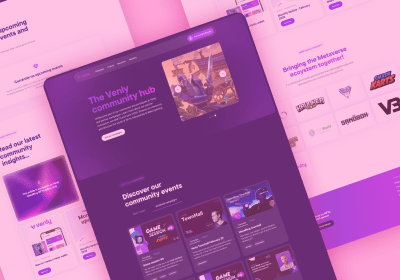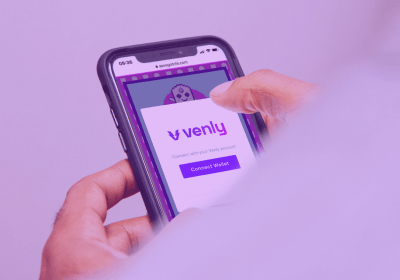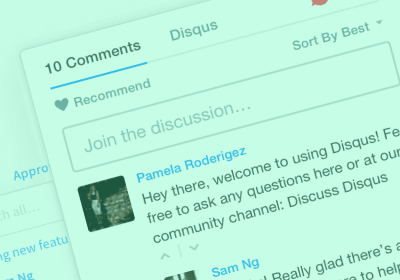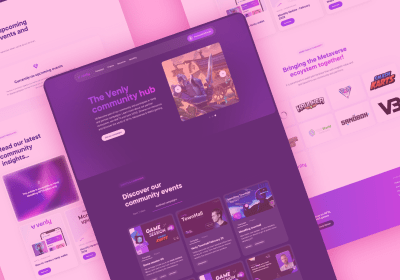
6 Reasons to Add No-Code Chatbot on your Client's Website

No-code platforms have begun to take over in the world of marketing. Low-cost, quick to implement and easy to optimize have made them many agencies' new best friends.
Reliance on development can be a hindrance. Corporate red tape often stands in the way of innovation. Whether that’s in e-commerce, web design or chatbot implementation, when you see the potential for a competitive advantage, you want it to go live as soon as possible.
A low-code or no-code platform alleviates the stress of a new rollout. Anyone with minimal technical know-how can build and release highly sophisticated web elements. The key takeaway here is Democratization; accessible to anyone, anywhere.
Why Chatbots?
When you consider how to create value for a client, you want to focus on what can bring a wide variety of results, for as little cost as possible.
A far cry from chatbots of old, today’s technology has put them into an entirely new space. More than just a support tool, modern chatbots are better thought of as conversational interfaces.
Full-screen or bubble size, chatbots are used to engage visitors in a personalized way. They can be built as:
- Quizzes
- Lead gen forms
- Landing pages
- Ecommerce assistants
- Prospect scoring tools
- Meeting schedulers
How Does It Work?
For a chatbot like this, you’ll need to start with your no-code platform of choice.
First, map out your goals. Next, think about the different customer journeys a website visitor may take, with all potential outcomes. You then choose a template and set the conversational sequences that would lead them to the desired result.
It’s down to you to write the dialogue, the tone, the gifs, emojis - whatever’s relevant for your client and their brand. The platform handles the complicated back-end work.
Once finished, you’ll have a series of different conversation paths, all of which will be tailored to each visitor and generate returns based on your initial goals.
Benefits Of Chatbots
In a digital landscape where businesses have to constantly compete for attention, being able to both stand out and do so much with so little, is a guaranteed way to make an impact.
Value For Your Clients
24/7 Availability
Having an online presence, even when you sleep, is vital if you want to keep potential customers from straying to your client’s competitors.
Only 35% of visitors are willing to wait 30-60 seconds for a live chat response.
Although the online era has meant you can attract prospects from all over the globe, it also means you need to be available for any time zone.
For most clients, the suggestion of staffing around the clock to answer visitor questions would have you laughed out of the office. Whether you need to generate sales, qualify prospects or answer existing customer questions, a chatbot is on standby 24/7. Not only do they have no downtime, but you’ll also benefit from instant responses. If a prospect reaches out to you directly, you know they’re engaged.
Allianz, one of the world's leading Insurance brands, followed this exact principle to consistently hit a 90% positive review score;
[We wanted] “A tool that would make the customer happy and which would continuously be improved. That's why we set up three goals: help is available 24/7, >85% of the feedback is positive and negative feedback gets converted into an improvement within 24hrs”
The longer you leave them waiting, the lower you fall in their estimations. Every interaction is an opportunity to build brand loyalty. If a customer can still purchase 5 pm, they should also be able to have their questions answered as well.
Brand Humanization
Humans thrive on conversation. It’s a much more enjoyable experience to have a real interaction than it is to fill out generic contact forms.
As you’re the one deciding on the chatbot’s dialogue, this inclination towards conversational experiences has benefits in a few different ways:
- You’ll showcase your clients brand personality by using language and tone that their customers are familiar with
- The better you understand your clients business, the deeper the levels of conversation you can go, resulting in a variety of end goals that a visitor may not expect
- An interaction that feels human builds trust, especially over one that feels robotic and corporate
- Programming a variety of engaging conversations represents the time and effort that has gone into building a strong support channel, which will resonate with prospects
Italy-based agency Conversational Design used a similar process to increase their lead conversion rate by 40%.
Ever heard the phrase the uncanny valley? Well, this also relates to the conversation as well. AI-powered chat software tends to fall into the gap of almost human, but you can still tell something’s not quite right. No-code chatbots, on the other hand, give you full control. As you’re the one building, you know how it’ll be interpreted.
Real-Time Data Collection & Personalization
Data is at the centre of any effective marketing effort. It’s also difficult to collect, as people have grown wary about handing over personal information without good reason.
When on a well-designed website with a chatbot, the front-end is simply an engaging, well-planned conversation. In the back-end, however, the visitor’s details are being collated, organized and stored, ready for export. Depending on the goal you’ve set for your bot, this may be utilised in a few different ways.
Lead generation bots gather prospect information. Communicated enticingly, they collect the personal details of would-be customers and segment them based on their needs.
Someone that is asking general questions about readily available products, can be pointed to the correct page for a quick check-out. If they’re asking about a previous purchase, product recommendations can be made for upsells.
A high-profile client may require a call back from an advisor, which your bot can schedule. Every piece of data is vital for future marketing campaigns; Age, location, business, job title, budget, etc. All of this can be extrapolated and used to inform the next steps in the marketing plan. Utilizing this information can also help your client to build a better buyer persona’s, generate more revenue, and influence their future strategy.
Value For You
Quick Deployment
One common personality trait of effective marketers is impatience. A reasonable level of impatience demonstrates a desire to achieve targets, not only for your client but for yourself as well. If your project consists of a large overhaul, such as a website build or e-store, you either have the traditional development route or no-code.
According to Brainspire, the average custom development project takes between 4 - 12 months, with 85% of these going over their deadlines. The alternative low-code or no-code route falls at the opposite end of the spectrum. Whether you build from scratch or speed things up even more with a template, you can have a purpose-built add-on ready to go within a day. This also makes the tools you build fully scalable. If the direction you’ve taken with your first idea has an impact, you can implement it across a variety of platforms just as fast.
You can also continually tweak the back-end with different conversations, end results or dialogue. As a result, you can A/B test what does and doesn’t work. With some slight amendments, you could even incorporate similar processes to different clients, optimizing your revenue and efficiency.
Easy Customer Communication
With no-code, the barrier to entry is low. Regardless of whether you have a strong technical understanding, the likelihood is that your client doesn’t. Once fully built and operational, you may want to hand off the reigns to your chatbot so you can focus on more important projects.
Taking the typical software development approach would mean that you would be completely dependent on the person that engineered the tool itself. Any small changes would need to be consulted and implemented, at a slow pace, with some associated cost.
Most no-code platforms operate from a drag-and-drop basis, making it easy to click around, change elements or reconstruct the text. In layman's terms, anyone can do it. A bonus is that you can more effectively communicate the what, whys and hows to your newest customers.
Offer Desirable Solutions For Competitive Prices
Low cost is a pillar of many no-code platforms. Due to the simplified nature of tool-building, the overall investment needed for implementation trickles down across the board.
The amount of time needed to create a chatbot is reduced, which means less focus taken from other activities. A small knowledge gap means it can be managed by anyone in the team, no matter their role.
Marketing agencies of any size can derive benefit from a chatbot, whether that’s within your lead gen efforts, or as a proposed upgrade to a client’s website. Having an innovative tool at your disposal, which is affordable, effective and with fast deployment, is a top-tier value add when pitching your services to a new potential partner. If it’s a competitive edge for your client, it’ll also be the same for you.
Need help with adding no-code chatbots on your client’s website? We’re here to help and answer all your questions. Leave your information and we’ll get back to you as soon as possible.

Start building today
Streamline your creative process and keep your team aligned with our collaboration tool.




